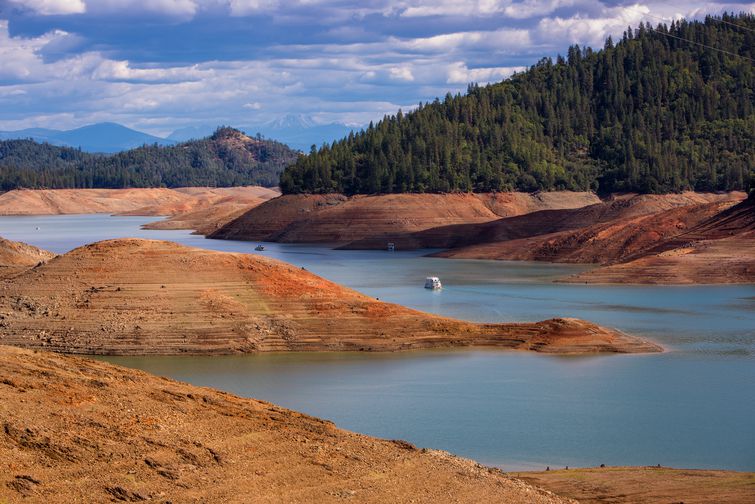California Faces More Drought
Published on February 20th, 2015
Hope springs eternal in the human breast, as Alexander Pope so famously said. And Americans in particular subscribe to this creed of optimism. Thus when heavy rains fell on Northern California last December and more of them this month, many people hoped these downpours were a harbinger that the state’s record drought might be coming to an end.
First, the good news: The percentages of California’s total land area suffering the two highest categories of drought declined during the past three months. The highest category, Exceptional Drought, contracted from 55 percent of the state’s area to 40 percent. The second highest category, Extreme Drought, contracted from 80 to 67 percent.
 |
| California’s largest reservoir registered 42 percent capacity at year-end 2014. |
And now the bad news: 93 percent of the state is still in the grip of Severe Drought, a percentage which hasn’t changed since December. The rains helped to replenish reservoirs, but at the end of that month every major reservoir in the state was still at less than 50 percent of full capacity. Following December was an unusually dry January, one that probably prevented any significant gains from the February rains. California gets most of its rainfall between December and February, so there is little chance for significant relief until next winter.
More bad news: Snowfall provides about 30 percent of California’s water, and snowfall this year in the words of state officials has been “dismally meager.” Specifically, the water contained in the snowpack around the state is only one-fourth of what it is under normal circumstances. Snow melt is vital for replenishing reservoirs during the typically dry summer months.
And still more bad news: The heavy rains of December and February did little if anything to replenish the state’s groundwater, which is now being seriously depleted to meet demand for water caused by the drought. Rain pounding down hard on the ground tends to run off quickly rather than seep into the ground. Far better is softer rainfall over an extended period of time. But significant replenishment of groundwater, in any case, will require years of adequate rainfall and snow melt.
But what if the state faces many more years of unrelenting drought? The present drought is already the worst in California’s recorded history. Even if it were to end soon, complacency would not be justified. Scientific evidence from the state’s pre-history going back a thousand years indicates that greater calamities have happened – major droughts lasting 10, 20 and even 240 years. A new scientific study predicts that one of these “megadroughts” will strike California and other western states sometime after the year 2050.
It’s pretty clear that California and much of the western United States can’t dodge the reality of drought and its consequences much longer. Already the discussion has begun with proposals for water management projects and greater efforts to conserve water. But conspicuously absent from these discussions is any reference to increasing demand for water caused by increasing population.
California’s population continues to rise. Today it is almost 39 million, and the state projects adding 3 million more people in the next five years. By 2046, little more than 30 years from now, it will reach 50 million if present trends continue, and nearly 53 million by 2060 – just in time for the predicted megadrought if it happens. But the most important point to consider is that present trends don’t have to continue.
Immigration accounts for most of the population growth, and immigration can be reduced to restrain that growth. Unfortunately, this obviously appropriate step is not on the table. Indeed, far from acknowledging it, the state government of California strongly encourages millions of illegal aliens to remain in the state while inviting still more to come.
Hope springs eternal among immigration enthusiasts and other utopians that population has no limits. In California, their optimism is on a dreadful collision course with some very dry facts.




